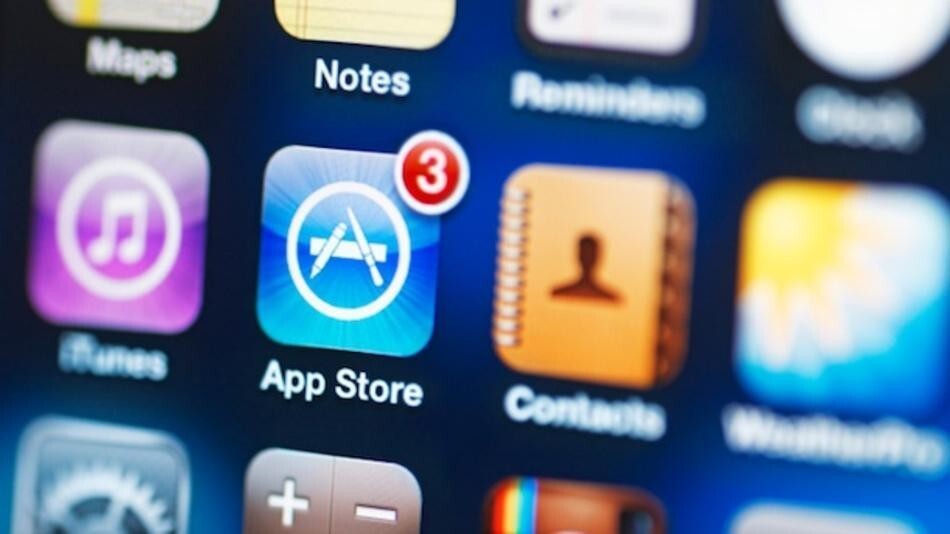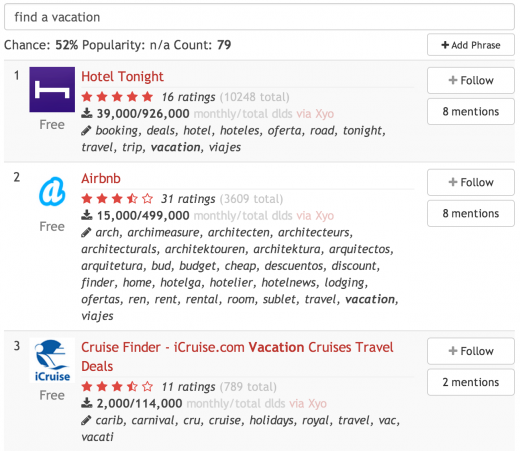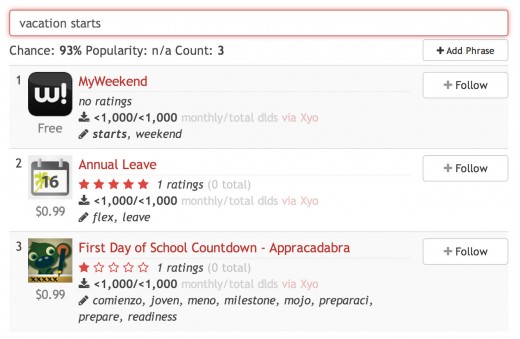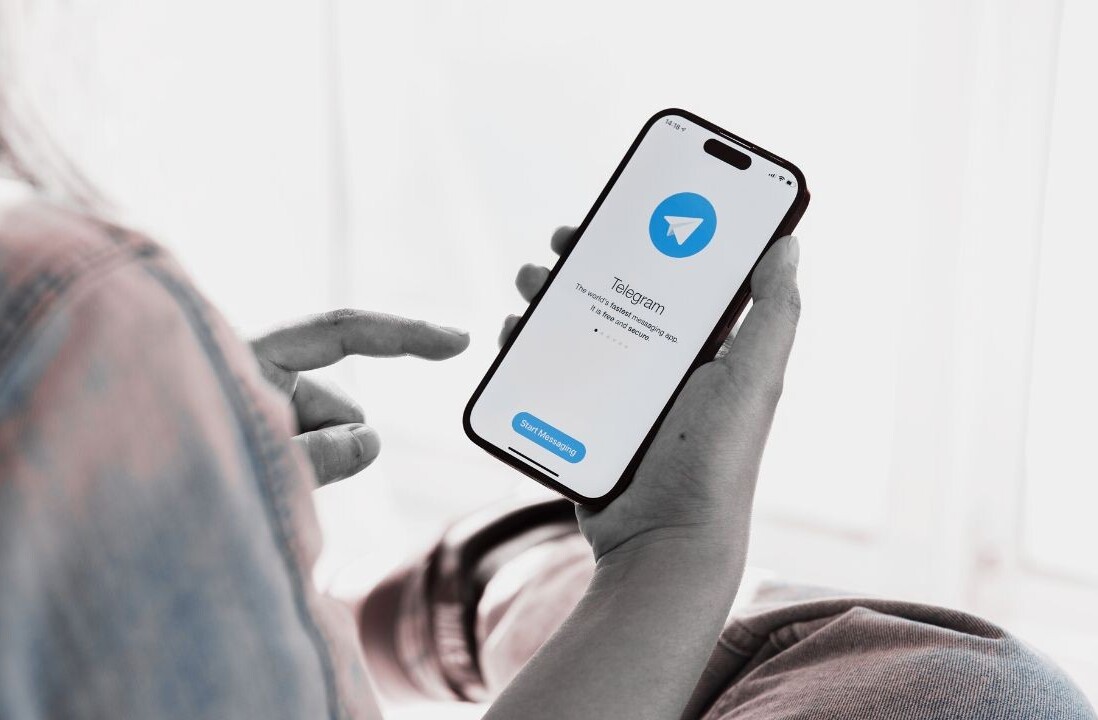
Gili Golander is a co-founder and CMO at Bazaart. Bazaart is the most beautiful way to mix your photos into mind-blowing images.
When I started my startup journey two years ago, one word came to my mind whenever I thought about marketing: liars.
You see, coming from a UX background where the focus is on giving people a great product experience, I tended to look at the marketing side of business as something reserved to slick types – characters often played so well by George Clooney.
As time passed and I took on the marketing role for my startup (while everybody else was busy coding), I started to see marketers differently. Today, I think of them as storytellers.
When you’re marketing a startup, you don’t have a fat marketing budget. In fact, more often than not, you have no budget at all – at least when you’re just starting. Your mission is to grow, and for B2C companies it means more users.
How do you approach this daunting task? Here are some tips and tricks that helped me grow the downloads for our app Bazaart from 0 to 500,000 organically, spending very little to no money at all.
Launch into an existing community, or piggyback one
When we launched our MVP, we were taking part in an accelerator program in NYC. This meant that we were on three-month deadline, hoping to show some traction by demo day.
We chose to integrate our product closely with Pinterest, which was the talk of the town in the summer of 2012, and allow our users to do more with their carefully curated photos. Even though our MVP was very limited, the core feature of photo collage editing was already there, so it gave Pinterest users a real value.
We launched a week before demo day and were able to generate a good media buzz (I’ll get more specific later) by piggybacking Pinterest and reach a go-to market that was highly relevant for us at the time. This is how we generated our first wave of downloads and it had cost us nothing at all.
We didn’t invent this approach. Investor Fred Wilson calls it finding “entry points” in his post about marketing and mentions similar examples for Twitter, Tumblr and Quora.
Instagram launched into a community of influential design oriented Twitter users, which allowed it to generate 25K downloads on launch day as it reveal in this excellent video. Find an existing community that’s right for your startup, or piggyback one, launch into it and it’ll make for a great start.
Next:: If you’re gonna go global, plan it from the start
Think global, start early
Being from Israel – population of 8M – means no sizeable market on the home front. Therefore, we knew we needed to look for our market elsewhere from the onset.
Many app developers believe that the US is their target market, and while it may be true for some, it’s definitely not true for all. WhatsApp founder Jan Koum is an Ukranian immigrant, and I’m betting it had helped him realize the potential of going global from day one. Needless to say, it worked well for him!
We first launched our product in English to target the US market, but pretty soon after we translated our app’s AppStore description to Russian, a language two of my co-founders are fluent in. It cost us exactly $0.
The Result? Our app caught fire on the Russian AppStore and we hurried to localize the app’s user interface as well. Russia, with its 145M population has been providing 21 percent of our downloads ever since, and it is our second largest market after the US to date.
Since we had no money to afford a professional translation service, I took advantage of the fact that Israel is very much a country of immigrants and asked for help from my relatives from Brazil and Argentina to do our Portuguese and Spanish localizations (thank you Luciana and Jaco!). These, too, were highly effective. Brazil, with a population of 200M and Mexico with 120M are now in our top 5 download countries.
Later, we used Fiverr translators for the German and French localizations ($5 each) and ran it by some native speaking friends to make sure all is well. Don’t skip on verifying the text when using Fiverr, because for five bucks, high quality is not guaranteed.
When we translated the app’s description to German using their service, my German friend Jan looked at it and started laughing, telling me that the language wouldn’t even be good enough for a porn movie… so I switched to a better Fiverr translator.
When we had a bit of funding at hand, we used One Hour Translation to localize to Italian for about $100. What a splurge! Italy, France and Germany are now in our top 15 download countries.
You get the picture. Localization of the AppStore metadata (name, description, keywords, screenshot text) yielded the best instant boost in downloads, while localization of the app’s UI makes for a better user experience and increases engagement.
Using the resources we had at no or little cost allowed us to quickly grab markets that are less well served. As a bonus, I had the chance to share our vision with my friends and family and get their help, advice and support.
For iOS, if you’re wondering where to begin your localization efforts, know that not all AppStores were created equal; some countries have their own AppStore and some share one, so you may want to shoot for the single country AppStore languages first.
A tip from our dev team: don’t hard-code strings in your app. If you do that, it will be a major headache to localize later. Even if you start with only one language, use the localizable.strings mechanism – your code will be cleaner and it will be super easy to add more languages later on.
ASO like a pro
ASO (Appstore Search Optimization) for apps plays a similar role to SEO for websites. It is basically an optimization of your AppStore metadata done in order to rank better on search results.
A popular figure says that 62 percent of the people find new apps by searching the AppStore, so it’s easy to understand why this is super important. I’m going to limit my tips to Apple’s AppStore, as that’s been my experience so far.
First, you need to optimize your app’s name, as it carries the most weight amongst your keywords. Don’t use just your app’s name in the name section, add to it a short description with relevant keywords. It will not only help you rank better on search results, but also help the people who find you understand exactly what you do, quickly.
Let’s say for example that your app’s name is Xanadu, and it helps people find vacations. You brainstorm and come up with two possible app names: “Xanadu – Find a Great Vacation” and “Xanadu – Your Vacation Starts Here.” Which one’s better?
Tentatively, I lean towards the first because it’s closer to how people search, as in “Find a vacation,” whereas the latter is more “marketish.” Before I commit, I always check my assumptions with keyword research tools, otherwise I’m just shooting in the dark.
My favorite keyword optimization tool these days is AppCodes (reasonably priced at $15/mo). It informs me that if I choose “find a vacation” I will have to compete with 79 apps for the keywords, including some strong competitors.
I have a 52 percent chance of making it to the top 16 on iPhone or top 9 on iPad, but the popularity of this search is unknown. The alternative “vacation starts” will compete with just three more apps and I’ll have a 93 percent chance of ranking high on search results, but the combination of an unknown popularity with a small number apps (little known, with a small number of downloads) matching this phrase hint that it’s an inferior option.


In addition, looking at the competitors, I get some hints about more keywords that are relevant to my domain and I can continue my research in a more enlightened way.
The rule of thumb for good keywords is not to focus on single words, but on short phrases and you want the phrases that have a high chance to rank on top and high popularity.
Your actual keywords are limited to 100 characters, so make the most of it. Don’t repeat any of the keywords in your app’s name or you’ll waste valuable characters.
Enter your keywords, separated by a comma, without any spaces. No need for prepositions and according to AppCodes there’s also no need to use “free” or your category name as Apple allegedly adds these to the keywords automatically.
One more thing to bear in mind is that localization is also very important in keywords. If your app is offered on the Russian AppStore too, will the Russian people be looking for “Find a vacation”? I seriously doubt it. I would research “поиск поездки“ instead.
While it can be a real challenge to optimize your keywords in languages you do not speak, it can also be quite rewarding, as fewer people bother to do it.
How do you get your keyword ideas? You can Google ideas and see what the autocomplete dishes out, ask your friends (also a great resource for foreign language keywords), research your competitors’ keywords, scan your AppStore reviews for hints, or my favorite – use Twitter.
I monitor a lot of the chatter around our app on Twitter and pay close attention to how people describe it. TweetDeck’s custom timeline lets me save relevant tweets on an ongoing basis.
Then when the time comes to groom my keywords again, I take a second look at these tweets and research the phrases I find. It’s super great for foreign languages because it contains a lot of slang and short terms which people often actually search for, but are not common knowledge if you’re not a native speaker.
Done with optimizing your keywords? Great! Now monitor your “performance” – i.e. your position for these keywords as the app goes live.
AppCodes recommends to replace any keywords that yields a position after the 10th, as people won’t go beyond. I am a little more lenient, as it is pretty hard to get to a top 10 position, especially on the first iterations.
Shoot for the first 25 places on your first iterations and improve from there. It is possible to get to the top 10 search results, I can guarantee you that, but you need to be creative and analytical at the same time. Isn’t that fun?
Keywords aside, AppStore reviews and rating also have a big impact on your AppStore ranking, which may also affect search results.
If your update is buggy, users will be intolerant and trash you in reviews and ratings. It may sound trivial, but make an effort to release highly-polished updates, especially with Apple’s week long approval process, to keep and improve your hard earned ranking.
Next: A one-woman PR team
Own your story
Before I started working on my startup, I actually went through a short stint in journalism. Alas, it was fashion journalism – as remote from the tech world as possible.
So when we first tried to get some press for our initial launch, I had my doubts about my ability to generate substantial PR. However, I did believe that I can write and I knew for a fact that I had no money to pay a PR firm, so I started to learn how to tell our story.
My first foray into PR was a bit naive. My co-founders told me their dream is to get covered on this large tech blog. First, I needed to identify the reporter that would be interested in our launch.
This part is easy – a simple Google search for your competitors’ names and the desired tech blog should yield relevant results. I then double checked it by looking into the reporter’s Pinterest account and verified that she was interested in what we were focused on back then: fashion.
Now comes the interesting part: the pitch. How do you rise above the noise of all the startups and their news and the busy lives of reporters, in order to get on their radar? I have never met this reporter, and to make things more complex – she was in NYC and I was in Tel-Aviv, a mere seven hours time zone difference.
I decided to use one of the features of our then product (which later became its very center) to create a photo collage from HER fashion Pinterest pins. I waited till it was 9 AM EST, tweeted it to her, and lo and behold she tweeted back that she liked it!
The tweet that got us major tech blog coverage.
The ground was then set for sending her my pitch email, while promising her an exclusive. She answered positively. It was personal, it was pretty, and it worked – a few days later we got our first major tech blog coverage. It was shared and replicated in many other blogs. Oh, and it cost us absolutely nothing.
For a great guide on how to approach bloggers, I recommend this post by Iris Shoor. Another an excellent resource was this beginner’s guide to PR by Brownstein and Egusa. The key is to save the reporter’s time as much as possible.
In addition, I had set Google alerts for various keywords pertaining to our domain, and every time I found a relevant article I added the reporter’s contact to my PR mailing list. It quickly grew to 200+ emails and I was able to get coverage on multiple blogs for each one of our press releases.
After a while, we pivoted and launched our new app. This time I was more prepared and experienced. I decided not to give any reporter an exclusive, but go for an embargo. About a week before our launch date I started contacting reporters, offering a test drive of the new app before it goes live on the AppStore.
This time I had more success and a few reporters were interested in the story. They tried the app, interviewed us, and on launch day, I knew that we had several major blog articles coming. Sweet!
It turns out that the major tech blogs are not great in terms of generating downloads, but they are trendsetters and have a social credo, so their content gets replicated on many other blogs. The best results, in terms of downloads, were achieved from posts on blogs in countries like Brazil, Italy, and so on.
In addition, I compiled a list of app review sites relevant to our app (here’s a good resource to start yours) and on the day the embargo was lifted, i.e. our launch day, I sent hundreds of emails and submitted our app to many app review websites, which generated more press, one that people specifically read in order to find and download new apps.
Not everything worked. Lots of reporters never answered me. People who said they would write about us never did. I did not succeed in getting us coverage on the mainstream press even though I tried many times. That’s just how it is, don’t be deterred by it.
All in all, our launch PR campaign got us on 50 blogs and news websites, not to mention the related social media buzz. People started asking me who our PR company is, which was kind of cool. But, most importantly, it allowed my company to grow from 0 to 500K downloads, on a shoestring.
We hope this was helpful and if you have more tips to share, feel free to comment below!
Get the TNW newsletter
Get the most important tech news in your inbox each week.





